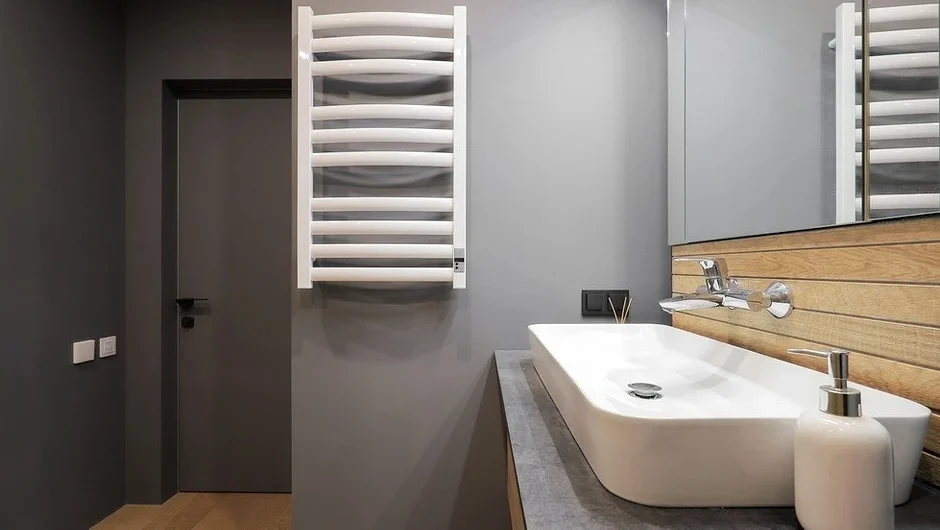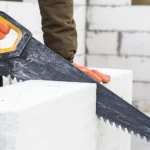We talk about the features of water and electric heated towel rails, their advantages and disadvantages. We offer a comparison table of two types of dryers.
Most of the time the air humidity in the bathroom is high. This is explained by frequent water procedures, the presence of drying towels, and other things. If the room is warm, the humidity will return to relative normality sometime after taking a shower or bath, but in the cold, you will feel unpleasant dampness. There are no heating devices in the bathroom, so an additional heat source is needed to maintain a comfortable microclimate. This is usually a water or electric-heated towel rail. Let’s figure out which one is better.
Features of a water-heated towel rail
The water-type device is a curved metal pipe within which heated water circulates. The device is connected to the heating circuit or included in the hot water supply system. In new buildings, the second option is most often not implemented. In older buildings, dryers are connected to heating. Devices are made from non-ferrous metals, black or stainless steel. For mass production, steel and stainless steel are used. Steel models are cheaper, but also last less. Dryers made of copper or brass are often made according to individual design projects.
The devices vary in pipe size and shape. There are “ladders”, and U- and M-shaped models. They produce devices with a rotating body, which is very convenient for small spaces. There are floor-mounted structures, which are connected to pipes placed in the floor, and wall-mounted ones, which are connected to a supply line to a vertical riser. Devices can be with bottom, diagonal, or side connection types. When choosing a model, it is important to clarify its operating pressure. It must match the pressure in the line. The advantages and disadvantages of all water-type dryers are common.
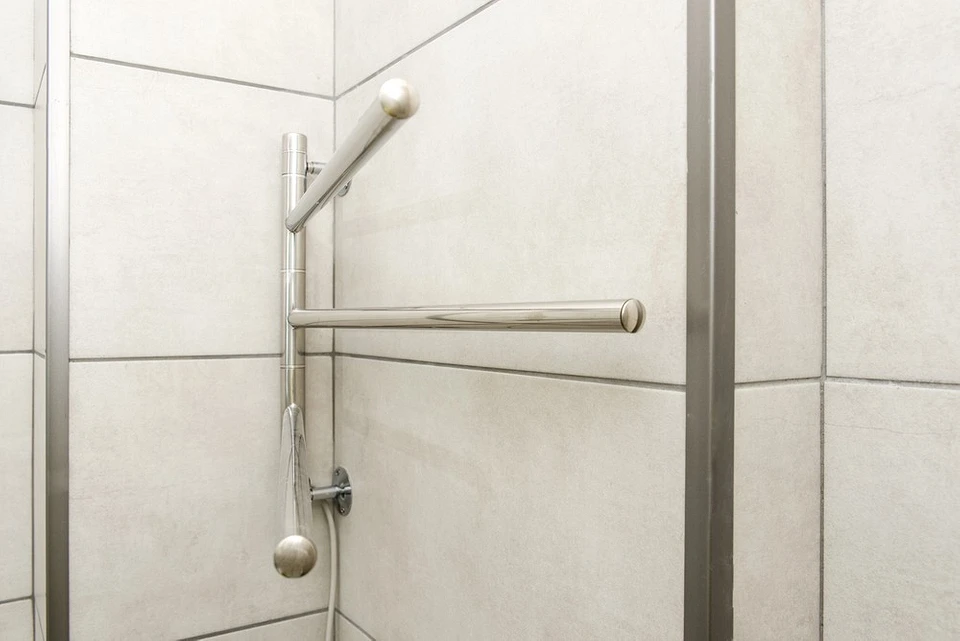
pros
- Connected to a hot water supply or heating, does not require additional costs during operation.
- When supplying hot water, always in working order.
- High heat dissipation.
- Wide range of models.
- Low price.
Minuses
- Can only be installed near the riser.
- Danger of leakage. The most vulnerable areas are welds and threaded connections.
- Complex installation, additional costs for plumbing services, and consumables.
- It is not possible to adjust the heating level.
- Stopping heating during a period of shutdown of hot water or heat, depends on the type of connection.
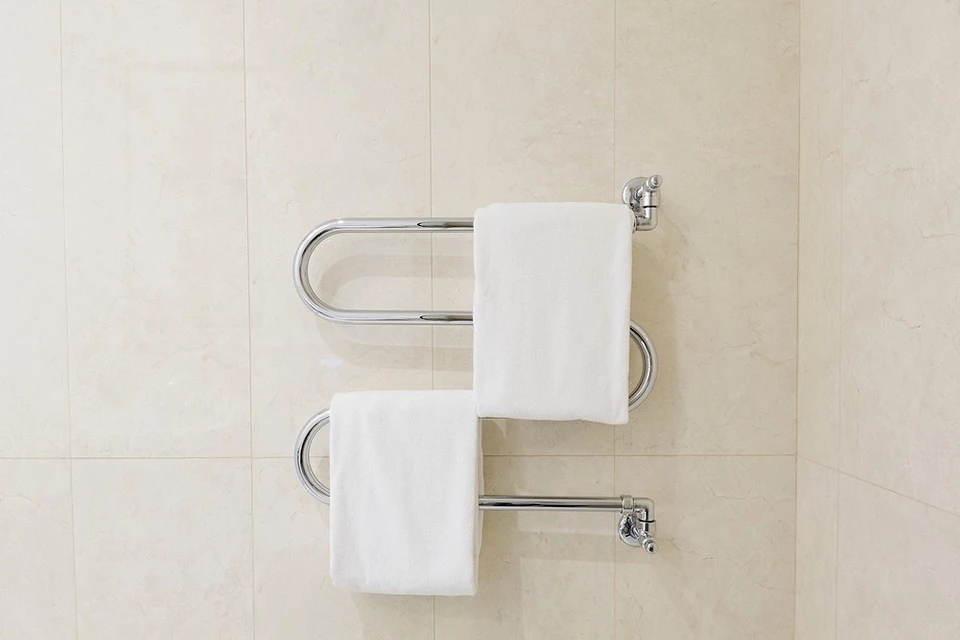
Features of electrical appliances
Electric heaters of “dry” and “wet” types are used as dryers. In the first case, an infrared heater or heating cable is placed inside a hollow metal casing. For “wet” models, the cavity inside the housing is filled with liquid: oil, water, or antifreeze. Instead of a heating cable, a heating element is installed. “Wet” devices maintain temperature longer and remain warm for some time after being turned off. “Dry” ones cool down immediately. But at the same time, they are cheaper and more durable, since the heating element is not in an aggressive liquid environment.
In addition to the heater, the design of electrical appliances may include a thermostat, which allows you to set the desired temperature. It is possible to have sensors, and then the device is capable of operating in automatic mode, turning on/off independently when the set temperature is reached. This mode makes it possible to save energy resources. Electrical appliances are connected hidden, that is, directly from the wiring, or openly. In the latter case, it is assumed that there is a plug that is plugged into the socket.
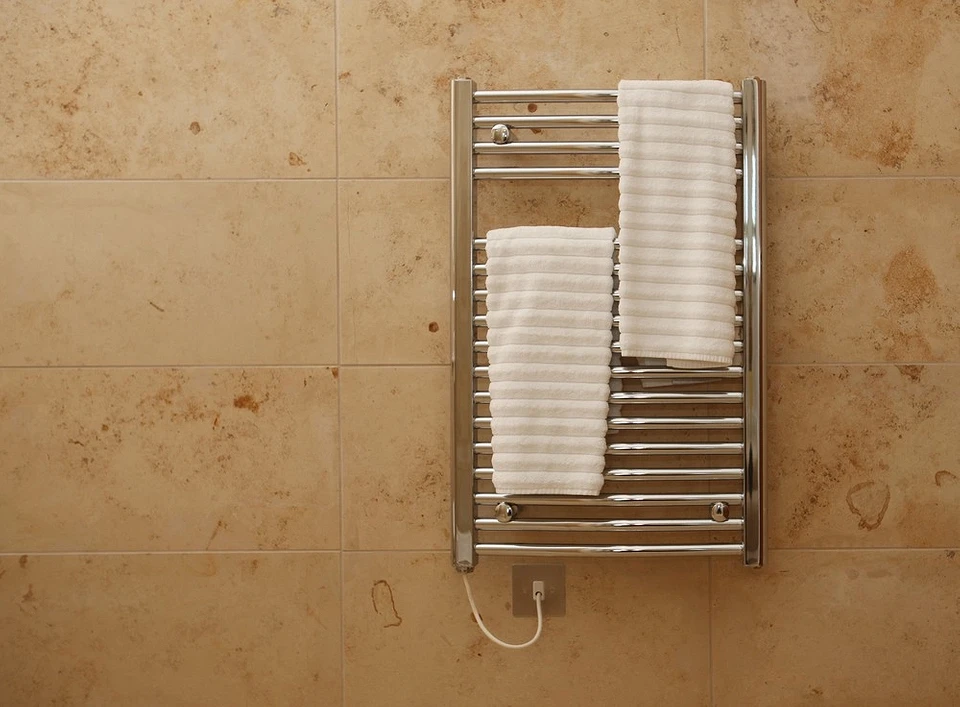
pros
- The operation of the electrical appliance does not depend on the timing of the shutdown of the hot water supply or heating.
- Simple installation, no specialists required. The main difficulty is installing a waterproof outlet.
- Installation of the electrical appliance is possible anywhere.
- Wide selection of sizes and designs.
- Possibility of adjusting the degree of heating of the electrical appliance.
- No leaks or threats of “flood” for the bathroom and the neighbors below.
Minuses
- The high price of electrical equipment.
- Electricity costs are required to operate the device. Devices consume electricity differently. The most economical are models with automatic control, but they are also the most expensive.
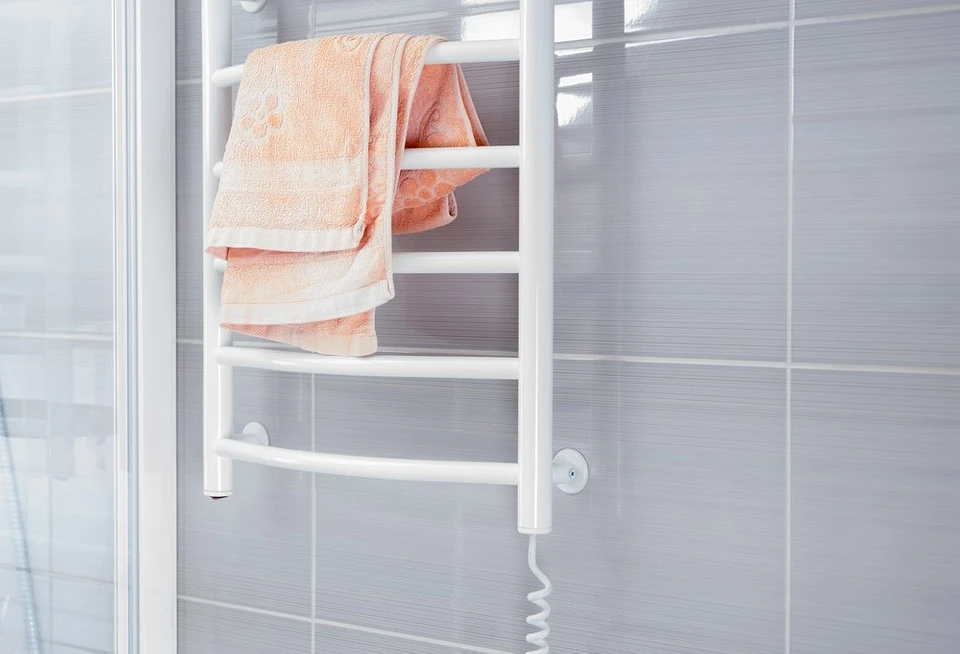
Which is more convenient: electric or water-heated towel rail, reviews
User reviews of dryers vary. Many people like water-type devices. They are valued for their economical operation and relatively low price. To ensure that the period of disconnection from the centralized mains is minimal, it is recommended to connect the device only to the DHW system. Then the “downtime” period will not be longer than two weeks. Some users install a heated floor in the bathroom and actively use it during the period when the water-heated towel rail is turned off. It turns out very convenient and economical.
The most vulnerable areas of water dryers are threaded connections and welds. Users recommend choosing models with a minimum of welding. For example, curved models are more durable than the popular “ladders”. Another important point. Water models cannot regulate the heating temperature, but without this, it can be very uncomfortable. Buyers suggest this solution to the problem. When installing the dryer, taps are installed that make it possible to turn off the device if necessary. This is not as convenient as heating control, but it makes it possible to maintain a normal microclimate in the bathroom.
According to reviews, electrical appliances are attractive due to their variety of design, operation without interruption, and the ability to be installed in almost any convenient place. Therefore, some users are ready to replace the water-heated towel rail with an electric one. At the same time, you need to be prepared for the fact that electricity bills will increase, perhaps even significantly. Those who have installed an electrical appliance say that inexpensive models are uneconomical and consume a large amount of electricity. They only have to be turned on for a while and then turned off. Without excessive increases in energy costs, only expensive models with automatic control can operate.
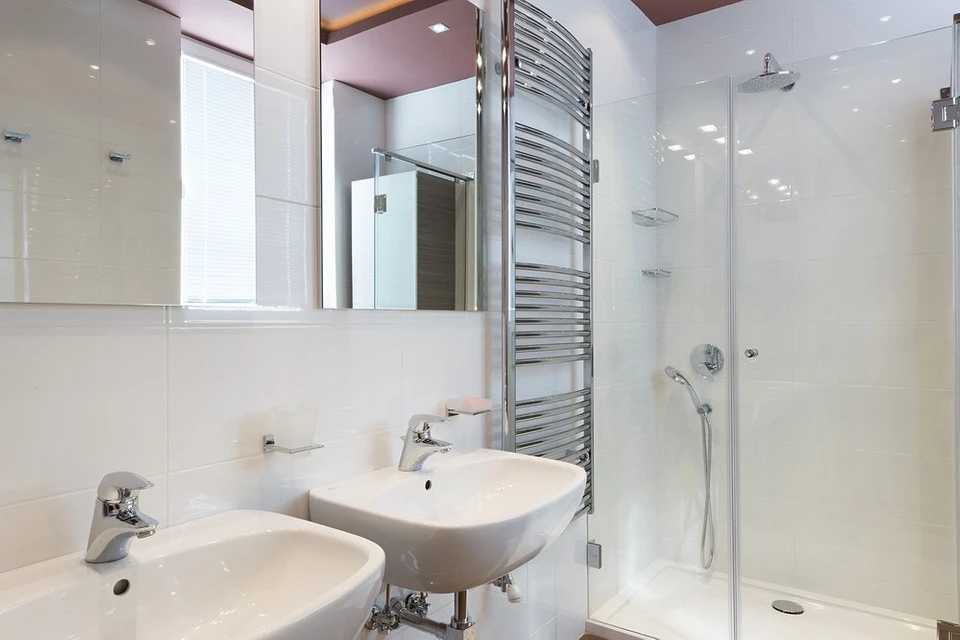
Which heated towel rail is better: water or electric?
It is impossible to determine which is better: an electric or a water-heated towel rail. First, let’s compare their main qualities. For convenience, we have collected them in a table.
| Main characteristics | Electrical appliances | Water dryers |
|---|---|---|
| Cost of operation | high | practically absent |
| Cost of equipment | high | average |
| Difficulty of installation | low | high |
| Reliability | high | average, possible leaks |
| Maintainability | low | high |
| Accommodation | anywhere | only near the riser |
| Variety of models | big | big |
| Safety | possible electric shock | high |
| Durability | average | high |
| Aesthetics | high | high |
The electrical appliance is superior to water models in terms of ease of use. It can be hung in any suitable place, as long as a waterproof socket is installed there. If there is automatic control, you can adjust the heating temperature, set heating parameters, and on/off times. Electrical equipment is not affected by heating or hot water outages. In addition, a water dryer warms up rather slowly, while an electric dryer heats up very quickly.
Water-type equipment wins in terms of efficiency, durability, and reliability. It works for free, except for heating or hot water charges. But it will happen in any case, and the presence of a dryer does not affect the amount. A model made of food-grade stainless steel without welds will work for several decades without requiring maintenance or financial investment. It is important to install the equipment correctly and reliably seal the threaded connections. Then the risk of leaks will be minimal.
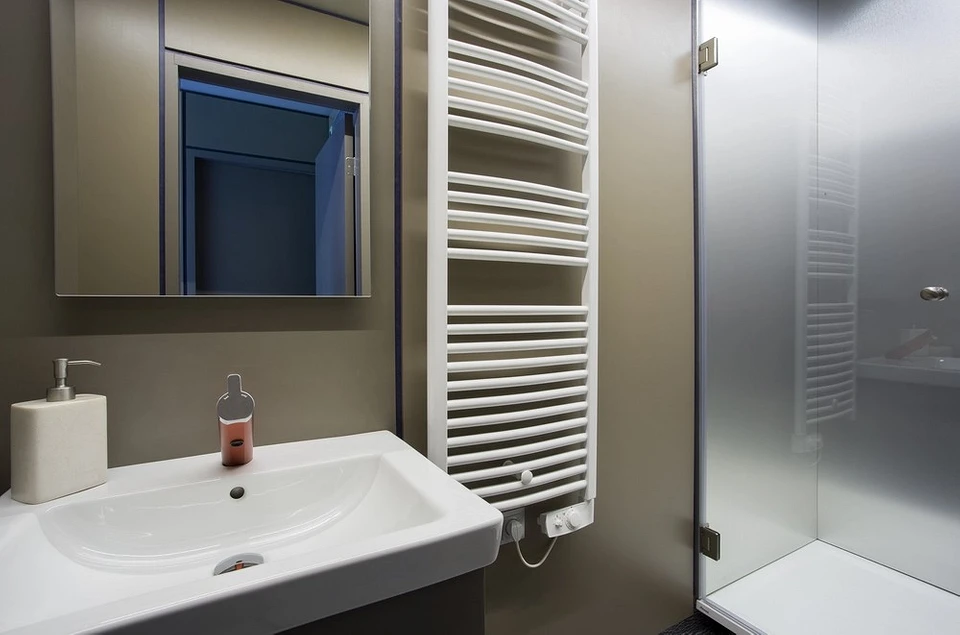
It can be concluded that each type of dryer is suitable for certain operating conditions. Thus, electrical equipment is convenient to install in apartment buildings. It will work during periods when the hot water supply is turned off and in the off-season and does not threaten neighbors with flooding. It is installed with caution in old houses – it is important that the wiring can withstand the additional load. In houses with autonomous heating, it is best to install a water dryer. There are no interruptions in heating or hot water supply, and there is no risk of hydraulic surges. The most economical ones choose water models; electrical equipment is installed only if there is no possibility of connecting to a hot water supply or heating.
Read more: Which home heating system is better: comparing 6 heating systems

